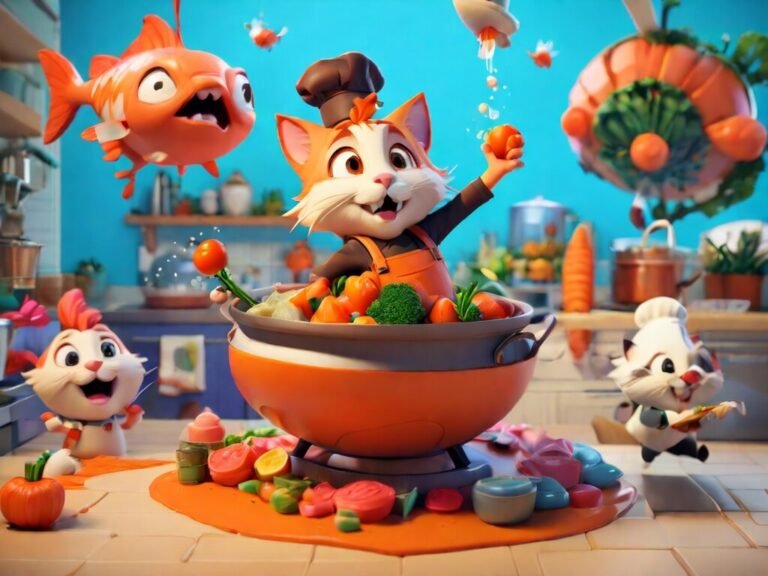Introduction
Welcome to the world of food blogging! If you have a passion for cooking, exploring culinary delights, and sharing your experiences with others, you’re in the right place. In this article, we’ll delve into the exciting journey of starting a food blog and uncovering the potential to turn your passion into a profitable venture.
Understanding the potential of monetizing your passion is key. While sharing your love for food with others is inherently rewarding, there’s also a vast opportunity to generate income through your blog. Whether you’re a seasoned chef or a home cook with a knack for creating mouthwatering dishes, there’s no limit to what you can achieve with the right strategies in place.

Getting Started with Your Food Blog
Choosing Your Niche
Finding your unique culinary voice is essential in the crowded world of food blogging. Consider what sets you apart from other bloggers—whether it’s your expertise in a specific cuisine, your innovative approach to cooking techniques, or your dedication to using locally-sourced ingredients. Identifying your target audience and their interests will help you tailor your content to meet their needs and preferences.
Setting Up Your Food Blog
Selecting the right blogging platform is the first step in bringing your culinary creations to life online. Whether you opt for a user-friendly platform like WordPress or a specialized food blogging platform like Food Blogger Pro, choose a platform that aligns with your technical skills and goals for your blog. Additionally, choosing a domain name and hosting provider that reflects your brand identity is crucial for establishing a professional online presence.
Designing Your Blog
Crafting an appealing and user-friendly layout is essential for keeping your audience engaged and coming back for more. Choose a clean and intuitive design that showcases your content effectively, making it easy for visitors to navigate your blog and discover new recipes and reviews. Incorporating captivating visuals, such as high-quality photos and videos, will enhance the aesthetic appeal of your blog and entice visitors to explore your content further.
Creating Compelling Content
Writing Engaging Recipes
Tips for developing original and enticing recipes abound. Experiment with unique flavor combinations, explore traditional dishes with a modern twist, and share your personal culinary journey with your readers. Remember to utilize storytelling to enhance the culinary experience, providing context and insight into the inspiration behind each recipe.
Crafting Informative Reviews
Techniques for providing detailed and honest product reviews are essential for building trust with your audience. Whether you’re reviewing kitchen gadgets, cookware, or specialty ingredients, provide thorough evaluations based on your personal experience. Leveraging personal anecdotes and insights will help you connect with your audience on a deeper level, fostering a sense of authenticity and credibility.
Photography and Videography Tips
Mastering food photography techniques for stunning visuals is crucial for making your recipes and reviews visually appealing. Invest in quality equipment, experiment with lighting and composition, and edit your photos and videos to enhance their visual impact. Incorporating video content, such as cooking tutorials and product demonstrations, will further engage your audience and bring your content to life.
Building Your Audience
Social Media Strategies
Leveraging platforms like Instagram, Facebook, and Pinterest to promote your blog is essential for reaching a wider audience. Share your content across multiple social media channels, engage with followers through likes, comments, and shares, and participate in food-related communities and discussions to expand your reach organically.
Networking with Other Bloggers
Collaborating with fellow food bloggers for mutual growth and exposure is a valuable strategy for expanding your audience and establishing credibility within the food blogging community. Look for opportunities to guest post on other blogs, participate in blogger roundups and interviews, and attend industry events and networking opportunities to connect with like-minded individuals.
Search Engine Optimization (SEO)
Understanding the basics of SEO for increased visibility in search results is essential for driving traffic to your blog. Conduct keyword research to identify relevant terms and phrases related to your niche, optimize your content with relevant keywords and metadata, and focus on creating high-quality, informative content that resonates with your audience.

Monetizing Your Food Blog
Affiliate Marketing
Partnering with brands and companies to promote products and earn commissions is a popular monetization strategy for food bloggers. Disclose affiliate relationships transparently to maintain trust with your audience and focus on promoting products and services that align with your brand and values.
Sponsored Content Opportunities
Negotiating sponsored posts and partnerships with brands is another lucrative revenue stream for food bloggers. Maintain authenticity and integrity in your sponsored content by only endorsing products and brands that you genuinely believe in and ensure that sponsored posts are clearly disclosed to your audience.
Creating and Selling Your Own Products
Developing digital products such as e-books or online courses related to your niche is an excellent way to diversify your income streams and provide value to your audience. Explore opportunities for merchandising physical products like cookbooks or kitchen gadgets, leveraging your expertise and authority in your niche to create products that resonate with your audience.
Generating Revenue Through Advertisements
Implementing display ads and sponsored content on your blog can provide a steady stream of passive income. However, it’s essential to balance monetization efforts with user experience, ensuring that ads are relevant, non-intrusive, and enhance rather than detract from the overall browsing experience.

Engaging with Your Audience
Responding to Comments and Feedback
Fostering a sense of community by engaging with readers in the comments section is crucial for building rapport and loyalty with your audience. Take the time to respond to comments and feedback promptly, addressing questions, concerns, and compliments with grace and professionalism.
Hosting Giveaways and Contests
Driving engagement and excitement by hosting promotional giveaways is a fun and effective way to reward your audience and attract new followers. Partner with brands to provide prizes and increase visibility, encouraging participation through social media shares and referrals.
Encouraging User-Generated Content
Encouraging your audience to share their own recipes and experiences is a great way to foster community involvement and showcase the diversity of your audience. Feature user-generated content on your blog and social media channels, highlighting the creativity and passion of your followers.
Frequently Asked Questions (FAQs)
Q: How much does it cost to start a food blog?
A: The cost of starting a food blog can vary depending on factors such as hosting fees, domain registration, and any additional expenses for themes or plugins. However, it’s possible to start a basic food blog with minimal investment, particularly if you choose a free or low-cost blogging platform.
Q: Do I need to be a professional chef to start a food blog?
A: No, you don’t need to be a professional chef to start a food blog. Many successful food bloggers are home cooks who have a passion for cooking and sharing their culinary adventures with others. What matters most is your enthusiasm for food and your ability to create engaging content that resonates with your audience.
Q: How can I attract readers to my food blog?
A: Attracting readers to your food blog requires a combination of high-quality content, effective promotion, and engagement with your audience. Share your blog posts on social media platforms, participate in food-related communities and discussions, and optimize your content for search engines to increase visibility and attract new readers.
Q: Can I make money from a food blog?
A: Yes, it’s possible to make money from a food blog through various monetization strategies such as affiliate marketing, sponsored content, selling digital or physical products, and generating revenue through advertisements. However, building a successful and profitable food blog takes time, effort, and dedication.
Q: How do I choose a blogging platform for my food blog?
A: When choosing a blogging platform for your food blog, consider factors such as ease of use, customization options, and the ability to monetize your blog. Popular platforms like WordPress, Blogger, and Squarespace offer user-friendly interfaces and a range of features to help you create and manage your blog effectively.
Q: What types of products can I promote through affiliate marketing on my food blog?
A: As a food blogger, you can promote a wide range of products and services through affiliate marketing, including kitchen gadgets, cookware, specialty ingredients, meal delivery services, and cooking courses. Choose products that align with your niche and resonate with your audience to maximize your earning potential.
Q: How do I stay inspired and motivated to create content for my food blog?
A: Staying inspired and motivated to create content for your food blog requires a combination of passion, creativity, and discipline. Experiment with new recipes and cooking techniques, explore different cuisines and culinary trends, and engage with your audience to gather feedback and ideas for future content.
Q: Is it necessary to disclose sponsored content on my food blog?
A: Yes, it’s essential to disclose sponsored content transparently on your food blog to maintain trust and credibility with your audience. Clearly label sponsored posts as such and provide honest and unbiased reviews of sponsored products or services to ensure transparency and authenticity.
Q: How can I effectively monetize my food blog without compromising the user experience?
A: Effectively monetizing your food blog without compromising the user experience requires a balanced approach. Focus on providing valuable and engaging content for your audience, and incorporate monetization strategies such as affiliate marketing, sponsored content, and advertisements in a way that enhances rather than detracts from the overall user experience.
Q: What steps can I take to optimize my food blog for search engines?
A: Optimizing your food blog for search engines involves various techniques such as keyword research, on-page optimization, and link building. Identify relevant keywords and phrases related to your niche and incorporate them strategically into your blog posts, meta tags, and headings. Additionally, focus on creating high-quality, informative content that provides value to your readers and encourages engagement and sharing.

Conclusion
In conclusion, starting a food blog and monetizing it is a rewarding journey that requires dedication, creativity, and perseverance. By following the strategies outlined in this article, you can turn your passion for food into a thriving online business.
Recap the key takeaways from the article, emphasizing the importance of finding your unique voice, engaging with your audience, and staying true to your passion for food blogging and entrepreneurship. Encourage readers to take the first steps towards starting their own food blog and wish them success on their culinary adventures.
